| Researchers have breakthrough on how persistent bacteria avoid antibiotics Posted: 29 Dec 2013 08:20 AM PST The mechanism by which some bacteria are able to survive antibacterial treatment has been revealed for the first time. Their work could pave the way for new ways to control such bacteria.  |
| Surgery vs. non-invasive treatment -- which is better for herniated discs? Posted: 27 Dec 2013 01:18 PM PST For patients with herniated discs in the lower (lumbar) spine, surgery leads to greater long-term improvement in pain, functioning, and disability compared to nonsurgical treatment, concludes an eight year follow-up study.  |
| Researchers point to digital gains in human recognition Posted: 26 Dec 2013 03:16 PM PST Human beings are highly efficient at recognizing familiar faces, even from very poor quality images.  |
| Fate of eels Posted: 26 Dec 2013 11:31 AM PST The European eel is one of the world's many critically endangered species. Comprehensive protection is difficult because many details of the eel's complex life cycle remain unknown. In a multidisciplinary study, biologists and oceanographers recently demonstrated the crucial influence of ocean currents on eel recruitment. They did so by using, among others, a state-of-the-art ocean model, in combination with genetic studies.  |
| Extensive use of antibiotics in agriculture creating public health crisis, study shows Posted: 26 Dec 2013 08:53 AM PST Citing an overabundance in the use of antibiotics by the agriculture and aquaculture industries that poses a threat to public health, an economics professor has proposed a solution in the form of user fees on the non-human use of antibiotics.  |
| New genetic risk factor for type 2 diabetes revealed Posted: 26 Dec 2013 08:53 AM PST An international team of researchers in Mexico and the United States has uncovered a new genetic clue that contributes to an increased risk of developing type 2 diabetes, particularly the elevated risk among Mexican and other Latin American populations.  |
| New drug candidates show promise for cure for Chagas disease Posted: 26 Dec 2013 08:53 AM PST A team of Canadian researchers has developed a class of compounds which may help eradicate a neglected tropical disease that is currently hard to kill in its chronic form.  |
| Using maths, researchers seek to improve success in transplants Posted: 24 Dec 2013 03:35 PM PST Given that 10.5 % of patients who receive a transplant reject the new organ, researchers are working in the design of a tool capable of preventing this problem. The process consists in knowing the type of proteins in charge of metabolizing the drugs (enzymes) for each patient which would, helped by a mathematical model, allow to establish the exact dose needed of the immunosuppressive drugs required.  |
| New approach to vertex connectivity could maximize networks' bandwidth Posted: 23 Dec 2013 03:19 PM PST Computer scientists are constantly searching for ways to squeeze ever more bandwidth from communications networks. Now a new approach to understanding a basic concept in graph theory, known as "vertex connectivity," could ultimately lead to communications protocols -- the rules that govern how digital messages are exchanged -- that coax as much bandwidth as possible from networks.  |
| Walking the walk: What sharks, honeybees and humans have in common Posted: 23 Dec 2013 03:19 PM PST In the first study of human hunter-gatherer movement patterns, a team led by UA anthropologist David Raichlen has found that the tribe's movements while foraging can be described by a mathematical pattern called a Lévy walk -- a pattern that also is found in the movements of many other animals, from sharks to honey bees.  |
| Gene that influences the ability to remember faces identified Posted: 23 Dec 2013 03:14 PM PST New findings suggest the oxytocin receptor, a gene known to influence mother-infant bonding and pair bonding in monogamous species, also plays a special role in the ability to remember faces. This research has important implications for disorders in which social information processing is disrupted, including autism spectrum disorder. In addition, the finding may lead to new strategies for improving social cognition in several psychiatric disorders.  |
| Cone snails are for life, not just at Christmas Posted: 23 Dec 2013 03:13 PM PST Those who fly to tropical shores this Christmas in search of sea and sun may be unaware that an exotic shell picked from the beach could potentially bring relief to many thousands of people suffering life-threatening illnesses.  |
| Attacking fungal infection, one of world's major killers Posted: 23 Dec 2013 03:13 PM PST Fungal infections take more than 1.3 million lives each year worldwide, nearly as many as tuberculosis, in addition to contributing to blindness, asthma and other major health problems. A researcher has made it his mission to reduce the death toll and severe disability that fungi can cause.  |
| Neurobiology: The logistics of learning Posted: 20 Dec 2013 08:36 AM PST Learning requires constant reconfiguration of the connections between nerve cells. Two new studies now yield new insights into the molecular mechanisms that underlie the learning process.  |



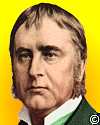
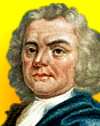
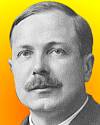
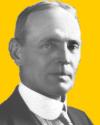
 What type of stars did he systematically survey?
What type of stars did he systematically survey? 
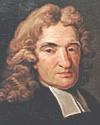

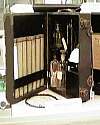
 If you enjoy this newsletter, the website, or wish to offer encouragement or ideas, please
If you enjoy this newsletter, the website, or wish to offer encouragement or ideas, please 